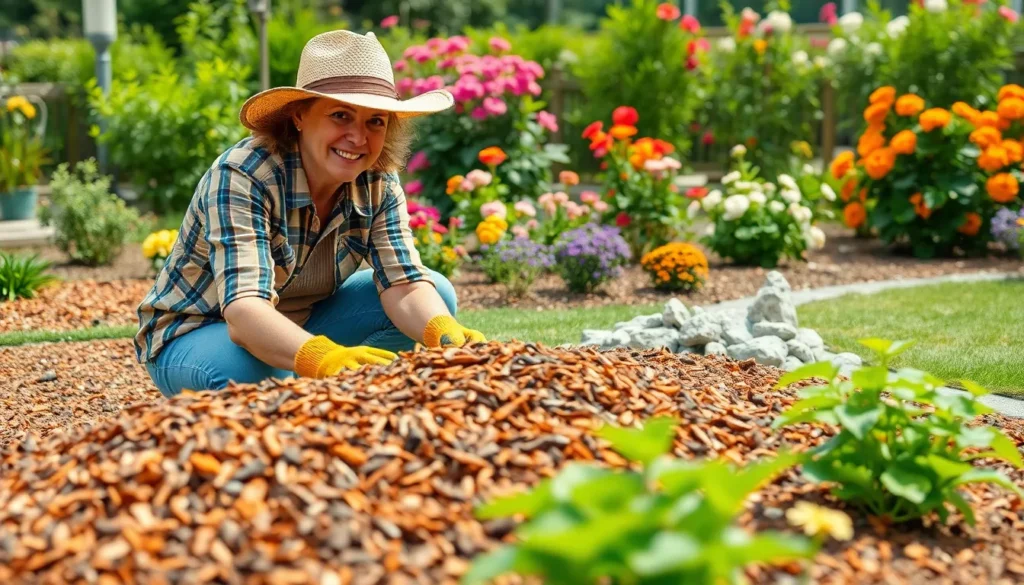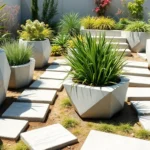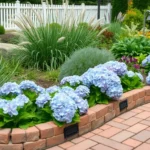Transforming your garden doesn’t have to expensive or require endless hours of maintenance. Mulching is one of the most effective strategies we can use to create a thriving industry that practically maintains itself. From suppressing weeds to retaining moisture and enriching soil health, the right mulch transforms ordinary garden beds into low-maintenance masterpieces.
We’ve discovered that choosing the perfect mulch isn’t just about function—it’s about creating visual appeal that complements your industry design. Whether you’re drawn to the rich earthiness of organic options or prefer the clean lines of decorative alternatives, there’s a mulching solution that’ll elevate your outdoor space.
Ready to unlock the secrets of successful mulching? We’ll share our favorite garden mulch ideas that deliver both practical benefits and stunning aesthetics, helping you create the garden you’ve always envisioned with less work and more beauty.
Organic Garden Mulch Ideas for Natural Soil Enhancement
Organic mulches break down naturally over time, feeding your soil while providing all the traditional benefits of moisture retention and weed suppression. We’ve selected these three organic options that deliver exceptional performance for different gardening needs.
Shredded Bark Mulch for Long-Lasting Coverage
Shredded bark mulch offers superior longevity compared to other organic options, typically lasting 2-3 years before requiring replacement. We recommend applying a 2-3 inch layer around trees, shrubs, and perennial beds where you want minimal maintenance.
Choose hardwood bark varieties like oak or maple for the best decomposition rate and soil improvement. These materials break down slowly while adding valuable organic matter to your garden beds.
Apply bark mulch in early spring after soil temperatures warm but before summer heat arrives. This timing maximizes moisture retention during the growing season while preventing pest issues that can occur with overly thick winter applications.
Keep bark mulch 3-4 inches away from plant stems and tree trunks to prevent moisture related diseases and pest problems. Proper spacing ensures air circulation while maintaining the mulch’s protective benefits.
Compost Mulch for Nutrient-Rich Soil Building
Compost mulch transforms garden beds into nutrient powerhouses by continuously feeding plants as it decomposes. We spread a 1-2 inch layer of finished compost around vegetables, annual flowers, and newly planted areas that need extra nutrition.
Create your own compost mulch using kitchen scraps, yard waste, and organic materials that decompose within 3-6 months. Homemade compost provides the freshest nutrients while reducing household waste.
Supplement store bought compost with additional organic matter like aged manure or worm castings for enhanced soil building properties. These additions boost microbial activity and improve soil structure over time.
Refresh compost mulch monthly during peak growing season to maintain consistent nutrient availability. Regular applications ensure plants receive steady feeding throughout their most active growth periods.
Leaf Mold Mulch for Moisture Retention
Leaf mold mulch excels at water retention, holding up to 5 times its weight in moisture while creating ideal growing conditions for plant roots. We collect autumn leaves and allow them to decompose for 6-12 months before using as mulch.
Gather leaves from oak, maple, and other deciduous trees that break down into rich, crumbly leaf mold perfect for moisture sensitive plants. Avoid using leaves from black walnut trees, which can inhibit plant growth.
Layer leaf mold 2-3 inches thick around hostas, ferns, and shade plants that thrive in consistently moist soil conditions. This organic mulch creates the forest floor environment many woodland plants prefer.
Mix partially decomposed leaves with finished leaf mold for varying decomposition rates and extended soil improvement benefits. This combination provides immediate moisture retention plus long term organic matter enrichment.
Decorative Garden Mulch Ideas for Aesthetic Appeal
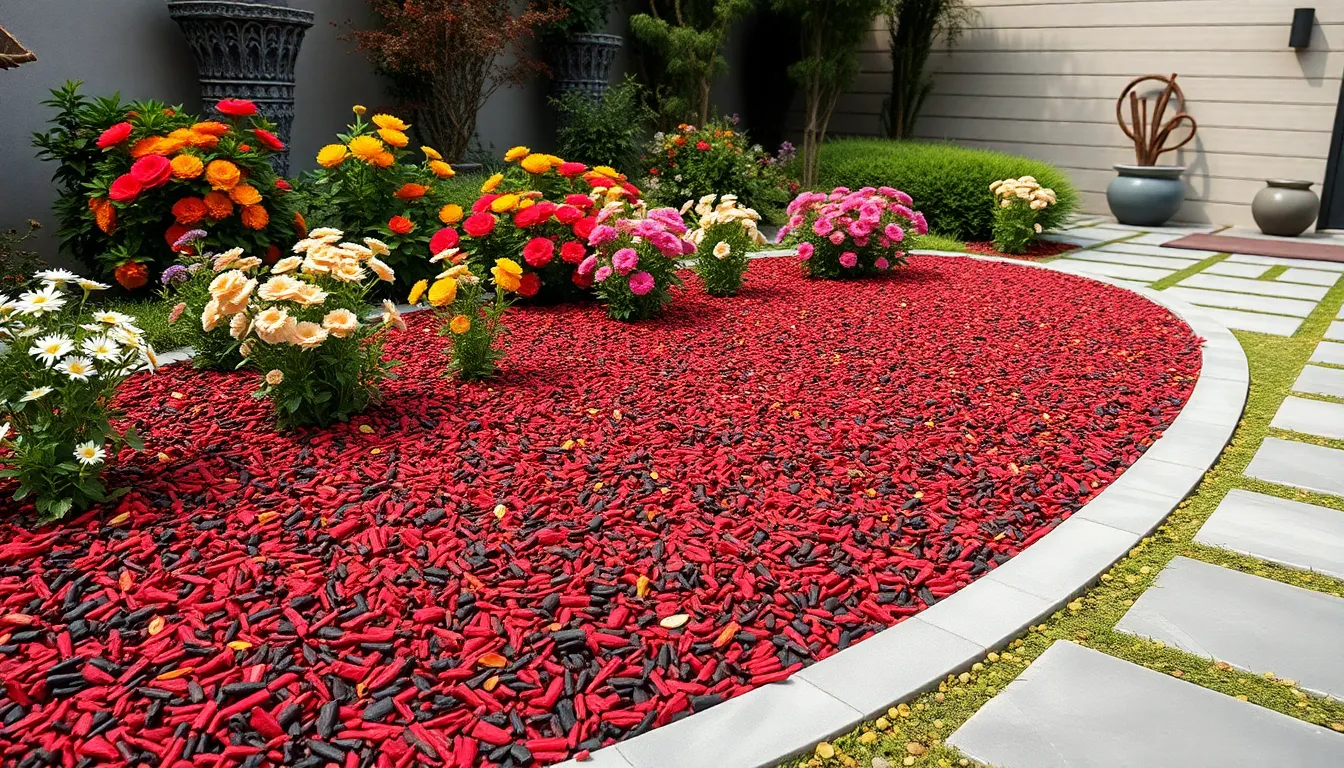
Moving beyond organic options, we can explore decorative mulches that transform our gardens into stunning visual displays. These aesthetic choices combine practical benefits with eye-catching appeal that enhances our industry design.
Colored Wood Chips for Vibrant Garden Beds
Colored wood chips create dramatic visual impact in our garden beds through strategic color placement. Red-tinted mulches complement Mediterranean plants and terracotta elements perfectly, while dark mulches provide striking backdrops for vibrant flowers. Black, gold, and red mulches are popular choices that help divide different regions of our yard while adding visual interest.
We can use colored mulches to create artistic patterns like concentric circles around trees or focal points. This technique draws attention to important industry elements while providing root protection and moisture retention benefits.
Stone and Gravel Mulch for Modern Landscapes
Stone and gravel mulch deliver sleek, contemporary aesthetics ideal for modern industry designs. These materials excel in high-traffic areas due to their exceptional durability and minimal maintenance requirements. We can rely on stone mulch to prevent weed growth while maintaining a polished appearance year-round.
Different stone sizes and colors allow us to customize our modern garden’s look. Gravel pathways create clean lines that complement architectural elements and hardscaping features throughout our outdoor spaces.
Cocoa Hull Mulch for Rich Chocolate Fragrance
Cocoa hull mulch offers a unique sensory experience with its rich chocolate fragrance that delights visitors to our gardens. This fine-textured mulch creates elegant surfaces perfect for formal pathways and sophisticated garden designs. We can use cocoa hulls to elevate our industry’s appearance with their smooth, refined texture.
The aromatic quality of cocoa hull mulch adds an unexpected pleasure to our gardening experience. Its fine consistency makes it ideal for detailed work around delicate plants and intricate garden layouts where precision matters most.
Budget-Friendly Garden Mulch Ideas Using Household Materials
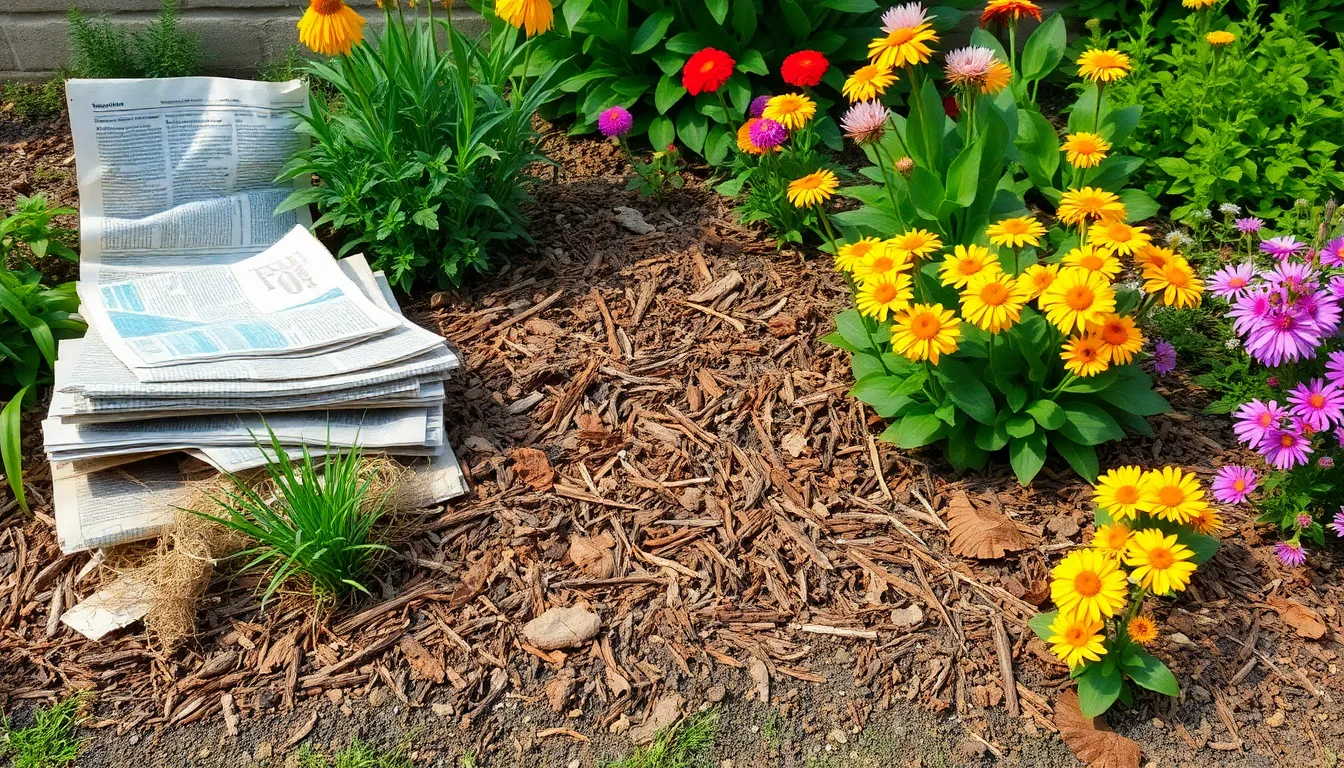
You don’t need to spend a fortune on commercial mulches when effective alternatives are hiding right in your home and yard. These household materials can transform your garden beds while keeping costs minimal.
Newspaper and Cardboard Mulch for Weed Suppression
Newspaper mulch offers an excellent weed barrier using materials you likely already have at home. We recommend laying thick layers of moistened newspaper directly over the soil, ensuring coverage around and between your desired plants. This method effectively blocks sunlight and prevents photosynthesis, stopping weed growth before it starts.
Cardboard provides a more robust solution for stubborn weed problems. We suggest using thicker cardboard pieces to smother existing weeds completely. Apply multiple layers (typically two) for maximum effectiveness, then cover with your preferred decorative mulch. This technique works particularly well under wooden mulches, though it’s less effective when paired with stones or rubber mulches.
Grass Clippings Mulch for Free Fertilization
Grass clippings deliver dual benefits as both mulch and natural fertilizer. We collect our lawn clippings after mowing and allow them to dry slightly before application. This prevents the clippings from matting together and suffocating your plants.
Fresh clippings are rich in nitrogen, making them perfect for soil amendment. We spread thin layers over garden beds to avoid overwhelming plants while providing continuous nutrient release. This approach gives your plants a steady supply of organic fertilizer throughout the growing season.
Pine Needles Mulch from Your Own Yard
Pine needles create an attractive, free mulch option that many gardeners overlook. We gather fallen needles from our property and spread them evenly around plants, creating a natural carpet that complements any garden design.
These acidic needles benefit acid loving plants like azaleas and blueberries significantly. We’ve found that pine needle mulch excels at moisture retention while naturally repelling many garden pests. The needles break down slowly, providing long lasting coverage that requires minimal maintenance throughout the season.
Specialty Garden Mulch Ideas for Specific Plants
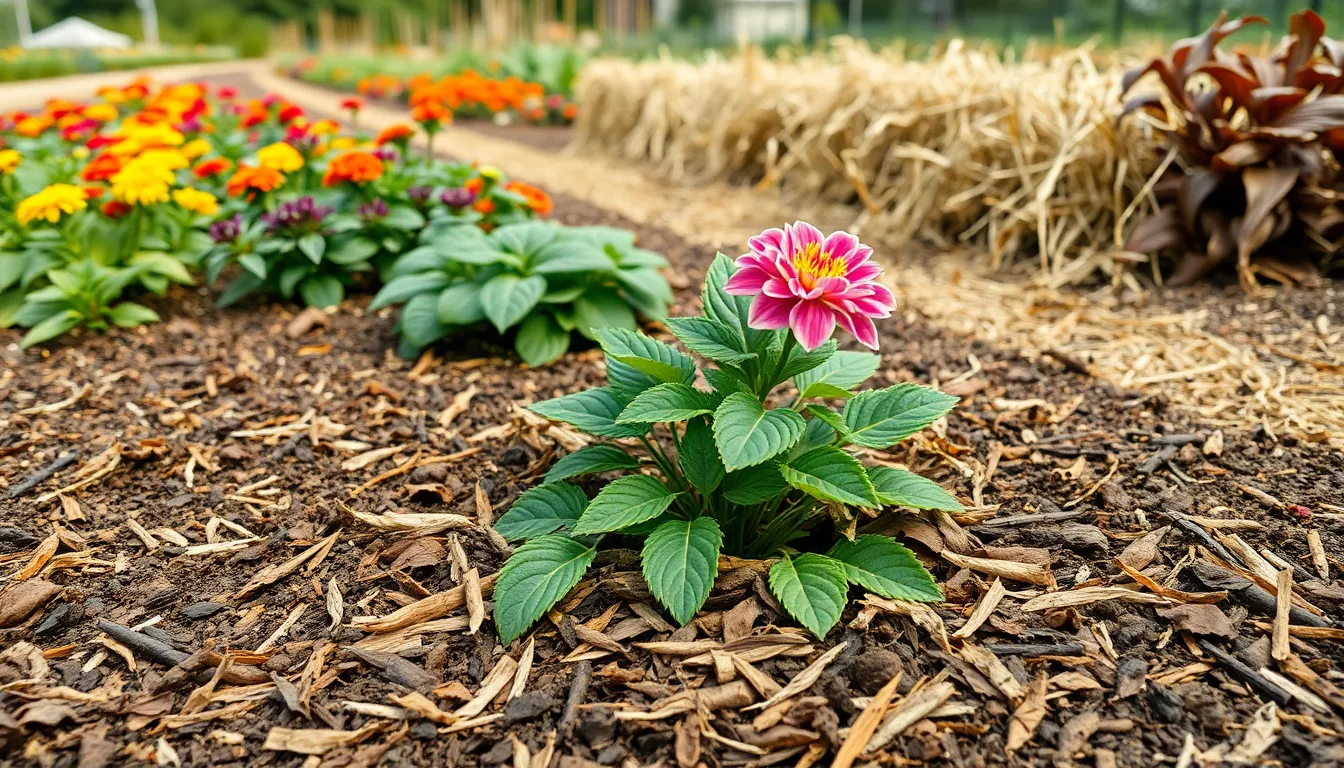
Certain plants thrive with specialized mulching approaches that cater to their unique growing requirements. Let’s explore targeted mulching strategies that’ll help you maximize the health and beauty of exact plant varieties.
Acid-Loving Plant Mulch Using Coffee Grounds
Coffee grounds make an excellent mulch component for acid-loving plants like blueberries and hydrangeas, though they lose most of their acidity during the brewing process. We recommend mixing coffee grounds with other organic materials such as leaves or bark to prevent clumping and avoid nutrient competition between the mulch and your plants.
Application works best when you spread a thin 1/2-inch layer of coffee grounds beneath a thicker layer of traditional mulch. This layering technique allows for gradual pH adjustment while providing the slow-release benefits your acid-loving plants need to flourish.
Vegetable Garden Mulch with Straw and Hay
Straw and hay create the perfect mulching solution for vegetable gardens by reducing weed growth, retaining essential moisture, and gradually adding nutrients to your soil. We’ve found that alternating layers of straw or hay with coffee grounds in a 3:1 ratio works exceptionally well between vegetable rows.
This combination approach suppresses weeds effectively while improving your soil’s overall structure. Spread the mixture evenly between rows, leaving adequate space around plant stems to prevent moisture-related diseases and pest issues.
Flower Bed Mulch Using Shredded Leaves
Shredded leaves provide flower beds with improved soil structure, enhanced moisture retention, and natural pest-repelling properties. We recommend spreading a 2-3 inch layer of shredded leaves around your flower beds to create an effective barrier against both weeds and unwanted pests.
Enhanced benefits come from mixing shredded leaves with coffee grounds, which adds extra nutrients while maintaining the mulch’s protective qualities. This combination creates an attractive, natural-looking mulch that complements flowering plants while providing long-term soil improvement.
Sustainable Garden Mulch Ideas for Eco-Conscious Gardeners
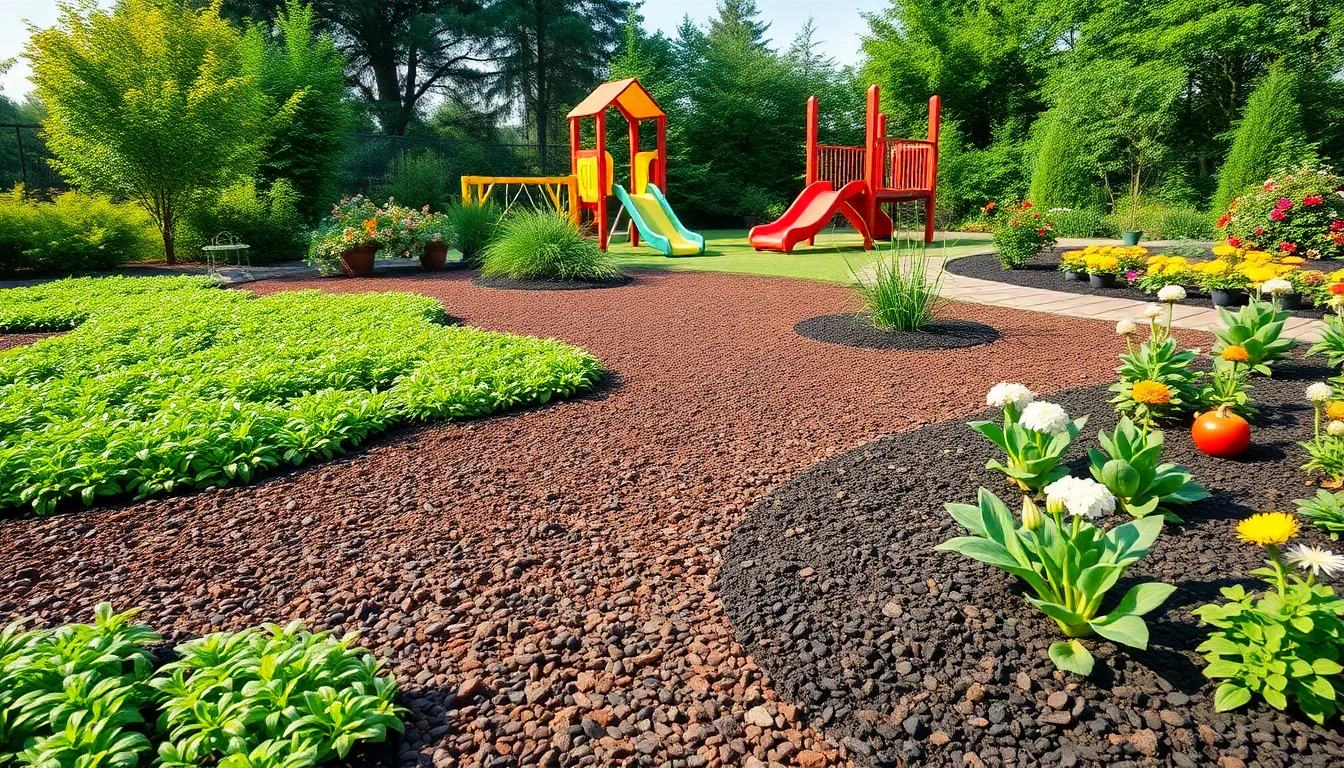
Building on our exploration of specialty mulches, we’re excited to share innovative sustainable options that reduce environmental impact while maintaining garden health.
Living Mulch with Ground Cover Plants
Living mulch transforms traditional mulching by using plants like clover and creeping thyme to cover soil surfaces. Ground cover plants prevent erosion naturally while suppressing weeds through dense coverage that blocks sunlight from reaching unwanted seeds. These living systems retain soil moisture more effectively than many organic materials since they continue growing and adapting to seasonal changes.
We recommend establishing clover as living mulch around vegetable plants because it fixes nitrogen in the soil while providing continuous ground protection. Creeping thyme works exceptionally well in herb gardens and pathways, releasing pleasant fragrances when walked upon. Unlike decomposing mulches that require regular replacement, living mulch systems become more established and effective over time.
Recycled Rubber Mulch for Durability
Recycled rubber mulch offers exceptional longevity compared to organic alternatives, lasting several years without decomposition or replacement needs. Made from recycled tires, this sustainable option diverts waste from landfills while providing effective weed suppression through complete sunlight blockage. Rubber mulch maintains its appearance and functionality through extreme weather conditions, making it ideal for high traffic areas and playground surfaces.
We’ve found rubber mulch particularly effective around trees and shrubs where long term durability matters most. Installation requires minimal maintenance since the material won’t blow away in strong winds or wash away during heavy rains. Color options allow gardeners to match their industry design while contributing to tire recycling efforts that benefit environmental conservation.
Mushroom Compost Mulch for Soil Enrichment
Mushroom compost mulch delivers rich nutrients as a byproduct of commercial mushroom cultivation, creating valuable soil amendments from agricultural waste. This nutrient dense material enhances soil fertility and structure while promoting healthy plant growth through slow release feeding. Gardeners benefit from improved soil drainage and water retention when mushroom compost breaks down naturally over growing seasons.
We apply mushroom compost mulch around vegetable plants and flower beds where soil enrichment provides the greatest impact on plant performance. The organic matter content improves soil biology by feeding beneficial microorganisms that support root health and nutrient uptake. Application rates of 2 to 3 inches provide optimal benefits without overwhelming plants with excessive nutrients or creating waterlogged conditions.
Creative Garden Mulch Ideas for Unique Landscaping
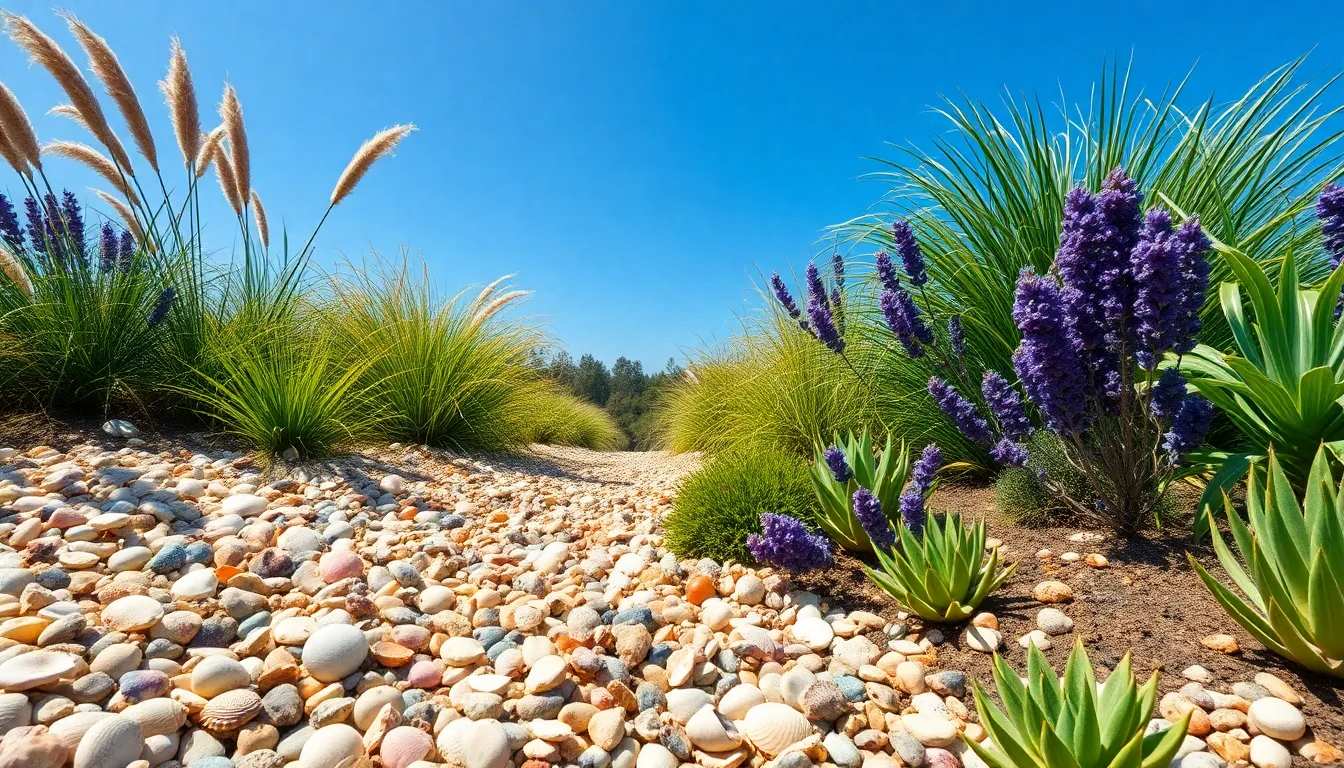
Transform your outdoor space with these distinctive mulch options that combine functionality with striking visual appeal. Each creative approach brings unique character to exact garden themes while maintaining essential moisture retention and weed control benefits.
Seashell Mulch for Coastal Garden Themes
Seashell mulch creates an authentic coastal atmosphere that transports you straight to the seaside. We love how this distinctive option varies in color and texture, offering natural hues from pristine whites to warm corals and weathered grays. The shells provide excellent drainage while maintaining soil moisture underneath, making them perfect for Mediterranean herbs and salt-tolerant plants.
Create stunning visual borders by using larger shells as accents and smaller crushed shells as the primary mulch layer. The natural calcium content gradually enriches your soil as the shells break down over time. Position seashell mulch around beach grasses, lavender, and succulents to complete your coastal garden vision.
Lava Rock Mulch for Desert Landscaping
Lava rock mulch delivers dramatic visual impact while thriving in extreme heat conditions. This volcanic material retains moisture beneath its surface during scorching days, protecting plant roots from temperature fluctuations. We recommend using different sized lava rocks to create depth and texture in your desert industry design.
Pair red and black lava rocks together for striking contrast against silver-leafed plants like sage and desert marigold. The porous nature of lava rock allows excellent air circulation around plant bases while providing superior weed suppression. Install this long-lasting mulch around cacti, agave, and other drought-resistant plants for maintenance-free desert beauty.
Fabric Mulch Combined with Decorative Toppings
Fabric mulch serves as your garden’s foundation layer, blocking weeds while allowing essential water and air penetration to plant roots. We layer decorative materials like colored wood chips, river rocks, or crushed glass over the fabric to achieve professional-looking results. This dual approach maximizes weed control effectiveness while creating customizable visual appeal.
Choose permeable industry fabric rather than plastic options to maintain healthy soil conditions. Top your fabric with seasonal decorative elements that you can easily refresh throughout the year. Apply bark chips in spring, switch to colorful stones for summer heat, and finish with decorative pine cones for autumn charm.
Seasonal Garden Mulch Ideas for Year-Round Protection
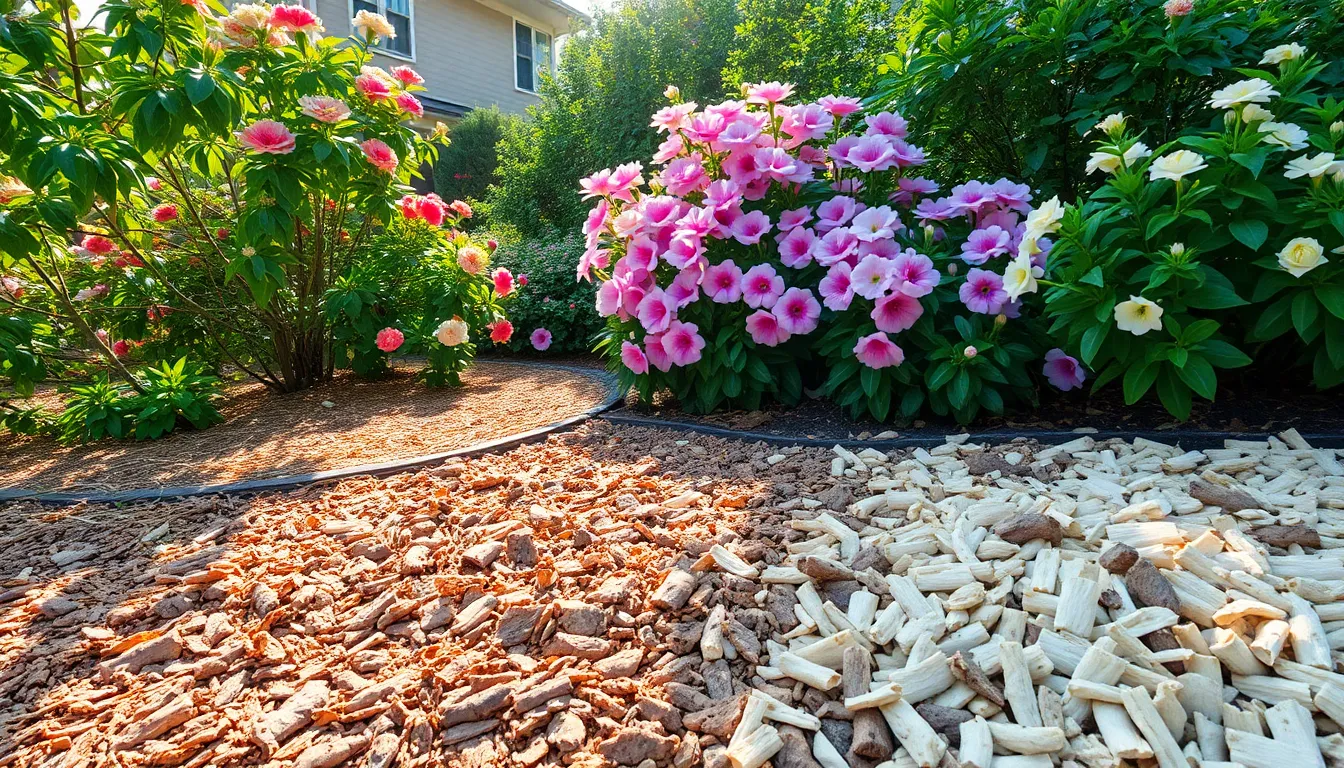
Garden mulch needs change throughout the year just like our plants do. We’ll share strategic seasonal approaches that keep your garden protected and thriving no matter what Mother Nature brings.
Winter Mulch Applications for Plant Protection
Winter mulching protects our plants from freezing temperatures and harsh weather conditions that can damage or kill sensitive vegetation. Apply mulch after the first frost hits your area, typically in late November or December for warmer climates. Organic materials like straw, bark chips, and fallen leaves work best during winter months because they provide insulation without trapping excess moisture.
These protective layers stabilize soil temperature around plant roots and prevent the freeze-thaw cycles that can heave plants out of the ground. Winter mulch keeps plants dormant longer, which prevents premature budding during warm spells that often lead to frost damage later. Pile mulch 3-4 inches deep around trees and shrubs, but keep it pulled back from plant stems to prevent pest problems and rot.
Spring Mulch Refresh for Growing Season
Spring brings the perfect opportunity to refresh our mulching strategy as soil temperatures warm and plants begin their active growing phase. Gradually remove or push back heavy winter mulch as the ground thaws to allow soil warming and new growth emergence. Light, breathable materials like grass clippings and pine straw replace heavier winter mulches because they help proper soil warming while still providing benefits.
Fresh spring mulch reduces weed germination by blocking sunlight from reaching dormant weed seeds in the soil. Moisture retention becomes crucial during spring’s unpredictable weather patterns, and proper mulching helps maintain consistent soil moisture levels. Apply 2-3 inches of new mulch around established plants and in garden beds to promote healthy root development and early season growth.
Summer Mulch Strategies for Heat Protection
Summer mulching focuses on moisture conservation and temperature regulation during the year’s hottest months. Heat-reflecting materials like white marble chips or light-colored wood chips work exceptionally well because they bounce sunlight away from soil surfaces instead of absorbing it. These reflective mulches keep soil temperatures cooler and reduce water evaporation rates significantly.
Apply summer mulch in thin layers of about 2-3 inches to avoid overheating the soil around plant roots. Proper summer mulching suppresses aggressive warm-season weeds that compete with our plants for water and nutrients. Moisture retention becomes critical during extended dry periods, and effective mulching can reduce watering needs by up to 50% while maintaining healthier soil conditions throughout the growing season.
Conclusion
We’ve covered a comprehensive range of mulching options that can transform any garden into a thriving low-maintenance paradise. From organic answers that feed your soil to decorative options that enhance visual appeal these mulching strategies offer something for every gardener’s needs and budget.
The key to successful mulching lies in matching the right material to your exact garden conditions and aesthetic preferences. Whether you’re working with acid-loving plants specialty vegetables or seasonal protection needs there’s a mulching solution that’ll deliver both functional benefits and visual impact.
Remember that mulching isn’t just about covering bare soil – it’s about creating a sustainable garden network that works for you year-round. With these diverse options at your disposal you’re well-equipped to create the beautiful efficient garden you’ve always wanted.
Frequently Asked Questions
What are the main benefits of using mulch in my garden?
Mulch provides three primary benefits: suppressing weeds, retaining soil moisture, and improving soil health. It creates a protective barrier that prevents weed growth, reduces water evaporation, and gradually decomposes to enrich the soil with nutrients. This makes gardens more self-sustaining and reduces maintenance time.
What are the best organic mulch options for improving soil naturally?
The top organic mulch options include shredded bark mulch for longevity and soil improvement, compost mulch for continuous nutrient feeding, and leaf mold mulch for exceptional moisture retention. Each type decomposes over time, adding organic matter and nutrients to enhance soil structure and plant health.
Can I use household materials as garden mulch?
Yes, several household materials make excellent mulch alternatives. Newspaper and cardboard effectively suppress weeds, grass clippings provide nutrients while mulching, and pine needles offer attractive coverage for acid-loving plants. These budget-friendly options are environmentally sustainable and readily available.
What decorative mulch options enhance garden aesthetics?
Colored wood chips create vibrant visual impacts and artistic patterns, stone and gravel mulches provide modern, sleek aesthetics with durability, and cocoa hull mulch adds rich chocolate fragrance with fine texture. These decorative options combine beauty with practical benefits like moisture retention and weed prevention.
How do I choose the right mulch for specific plants?
Match mulch to plant needs: coffee grounds work well for acid-loving plants like blueberries and hydrangeas, straw and hay benefit vegetable gardens by suppressing weeds and improving soil structure, and shredded leaves enhance flower beds with moisture retention and natural pest-repelling properties.
What are sustainable mulch alternatives for eco-conscious gardeners?
Sustainable options include living mulch with ground cover plants like clover that prevent erosion, recycled rubber mulch that lasts for years with minimal maintenance, and mushroom compost mulch that enriches soil fertility. These eco-friendly choices reduce environmental impact while maintaining garden health.
Should I change my mulching strategy seasonally?
Yes, seasonal mulching optimizes plant protection year-round. Use organic materials like straw and bark chips for winter insulation, lighter materials like grass clippings for spring soil warming, and heat-reflecting materials for summer temperature regulation. Adjust mulch thickness and type based on seasonal weather conditions.
What creative mulch ideas can make my garden unique?
Creative options include seashell mulch for coastal themes with excellent drainage, lava rock mulch for dramatic desert landscaping, and fabric mulch as a foundation layer topped with decorative materials. These unique choices enhance garden character while providing essential moisture retention and weed control benefits.

